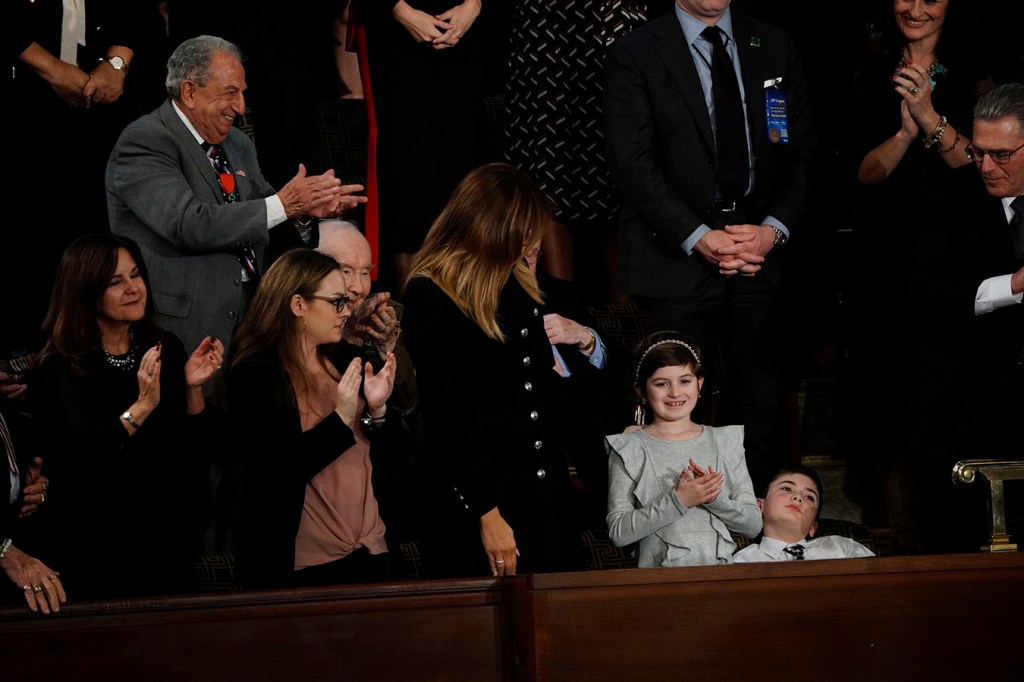President Donald Trump announced Tuesday during his State of the Union address that he was asking Congress to allocate $500 million over the next 10 years for pediatric cancer research.
Organizations such as the American Cancer Society viewed the investment as a positive step.
“Any increase in current funding levels is a good thing,” said Keysha Brooks-Coley, the vice president of federal advocacy at the Cancer Action Network, the advocacy arm of the American Cancer Society. “We have to start someplace, and the president’s announcement puts us there.”
What’s unclear is how meaningful the increase is in relation to current federal spending on childhood cancer research.
The National Institutes of Health estimates its 2019 spending in this area to be $462 million, according to research portfolio data. So, $500 million over 10 years, or an average $50 million a year, amounts to a bit more than a 10 percent increase.
House Speaker Nancy Pelosi considered Trump’s proposed funding level insufficient, according to a congressional aide who was in a closed-door meeting Wednesday with her.
“Five hundred million dollars over 10 years — are you kidding me?” Pelosi reportedly said during the meeting. “Over 10 years, $500 million, $50 million a year. That’s like — what?! Who gave him that figure? It’s like the cost of his protection of his Mar-a-Lago or something.”
But a spokeswoman at the National Cancer Institute (NCI), which is a part of the NIH, told KHN it would “embrace the opportunity to lead a national initiative on childhood cancer.” However, she added, it was not clear whether the $500 million would come from completely new funding, or would include the already allotted funds — a point that she hopes would be clarified by the president’s soon-to-be released 2020 budget.
For now, a senior administration official told KHN “it is common practice that we don’t comment on deliberative or pre-decisional information prior to the release of the President’s FY2020 budget.”
To put it in perspective: The $500 million figure pales in comparison to other medical research initiatives that previous presidents have outlined amid the pomp and circumstance of this annual speech.
Barack Obama announced during his 2016 State of the Union that he wanted to “make America the country that cures cancer once and for all,” launching what came to be known as the “Cancer Moonshot” initiative. In his initial announcement, Obama proposed $1 billion to be parceled out over fiscal years 2016 and 2017.
That amounts to an average of $500 million over two years.
(Story continues below.)
But presidents don’t always get all they ask for. In December 2016, Congress passed the 21st Century Cures Act, which instead allotted $1.8 billion to the Moonshot effort over seven years. That averages to about $257 million for each of those years, though it’s up to Congress each year to decide on the Moonshot’s actual appropriation.
Obama also spearheaded the BRAIN initiative, which he announced in April 2013 and alluded to during the 2013 State of the Union. The BRAIN Initiative provides funding for brain-related research, including Alzheimer’s disease, traumatic brain injuries and epilepsy.
Obama wanted $100 million for fiscal year 2014, which he got. He also wanted funding to increase annually, which it did, until fiscal year 2017.
By far the largest health-related presidential pledge of the past 15 years was George W. Bush’s 2003 request for funding to end the global HIV/AIDS epidemic. During the 2003 State of the Union, Bush asked Congress “to commit $15 billion over the next five years, including nearly $10 billion in new money, to turn the tide against AIDS in the most afflicted nations of Africa and the Caribbean.”
The public health program came to be known as the President’s Emergency Plan for AIDS Relief, or PEPFAR. Averaged out, Bush’s proposed spending was $3 billion a year. (In inflation-adjusted dollars, that would be $4.09 billion today.) Funding levels for PEPFAR surpassed $15 billion by 2008.
Last year, Trump signed the Childhood Cancer STAR Act, which appropriates $30 million a year for the NIH and the Centers for Disease Control and Prevention to spend on research for childhood cancer. Under Trump, the NIH’s budget has increased from $36 billion in 2017 to an estimated $39 billion in 2019.
According to the American Cancer Society, pediatric cancer makes up fewer than 1 percent of all cancers diagnosed each year. The NCI says that cancer is the leading cause of death by disease for children past infancy, and in 2018 it was estimated that 1,780 children would die from various forms of the disease.







